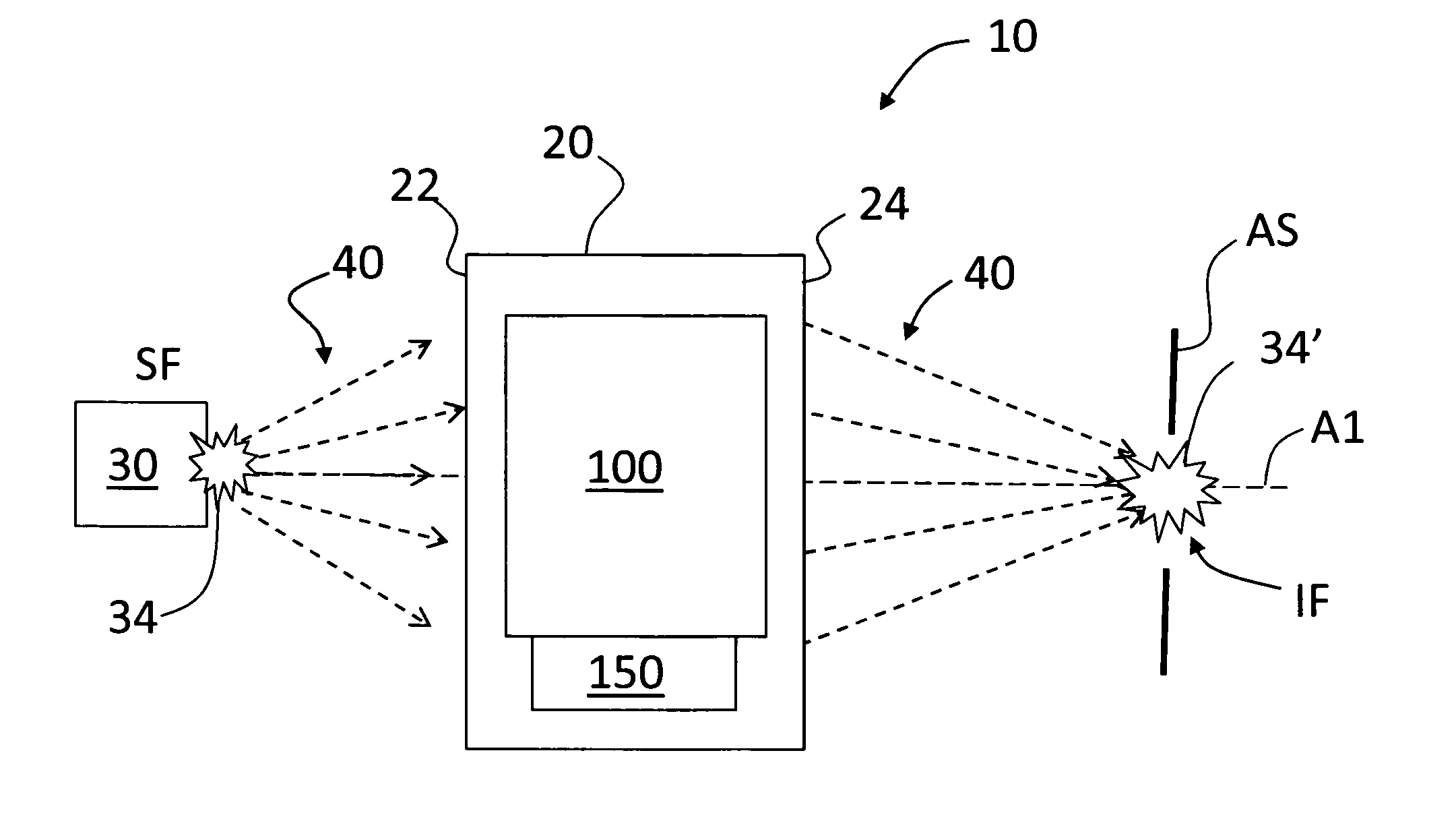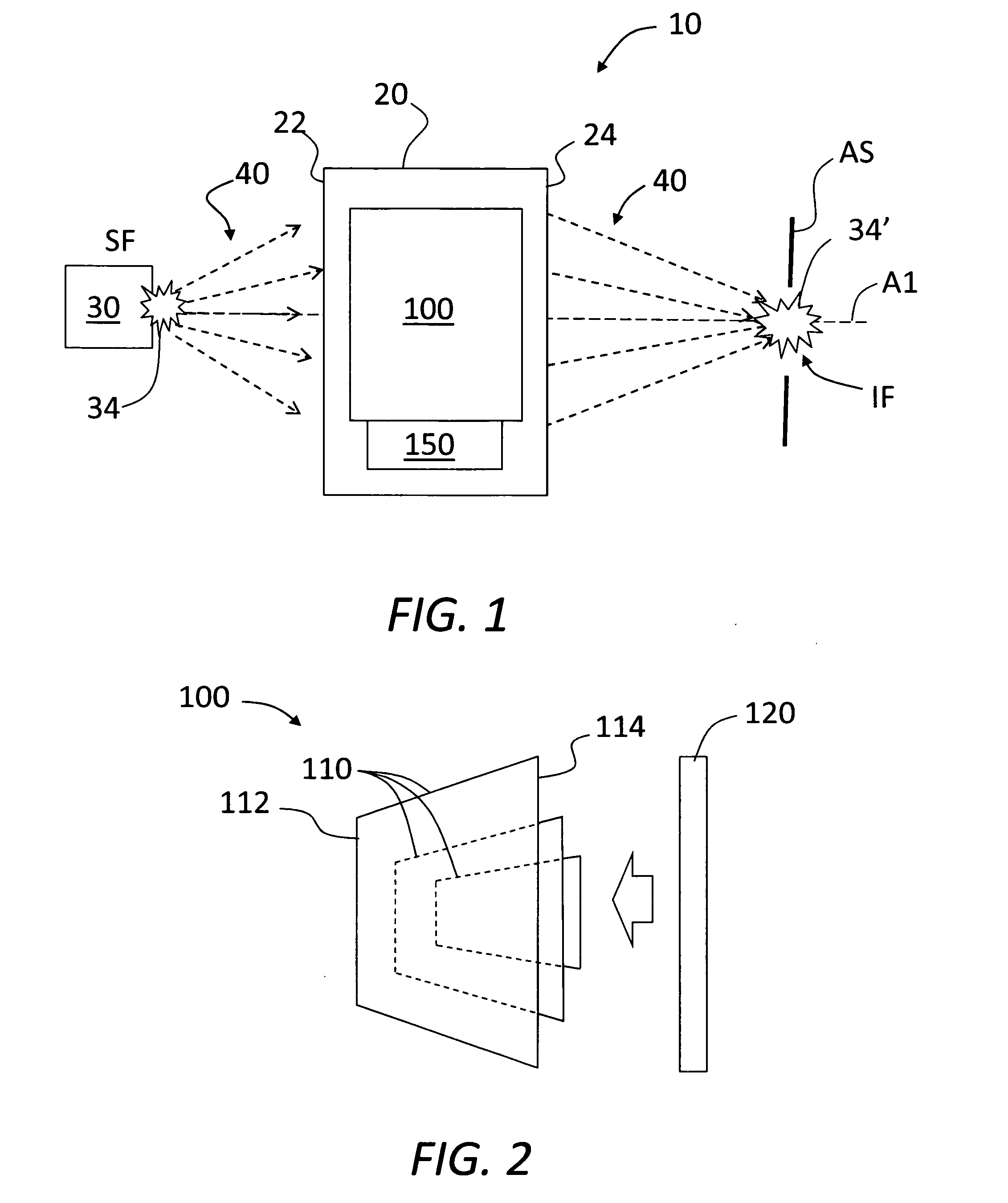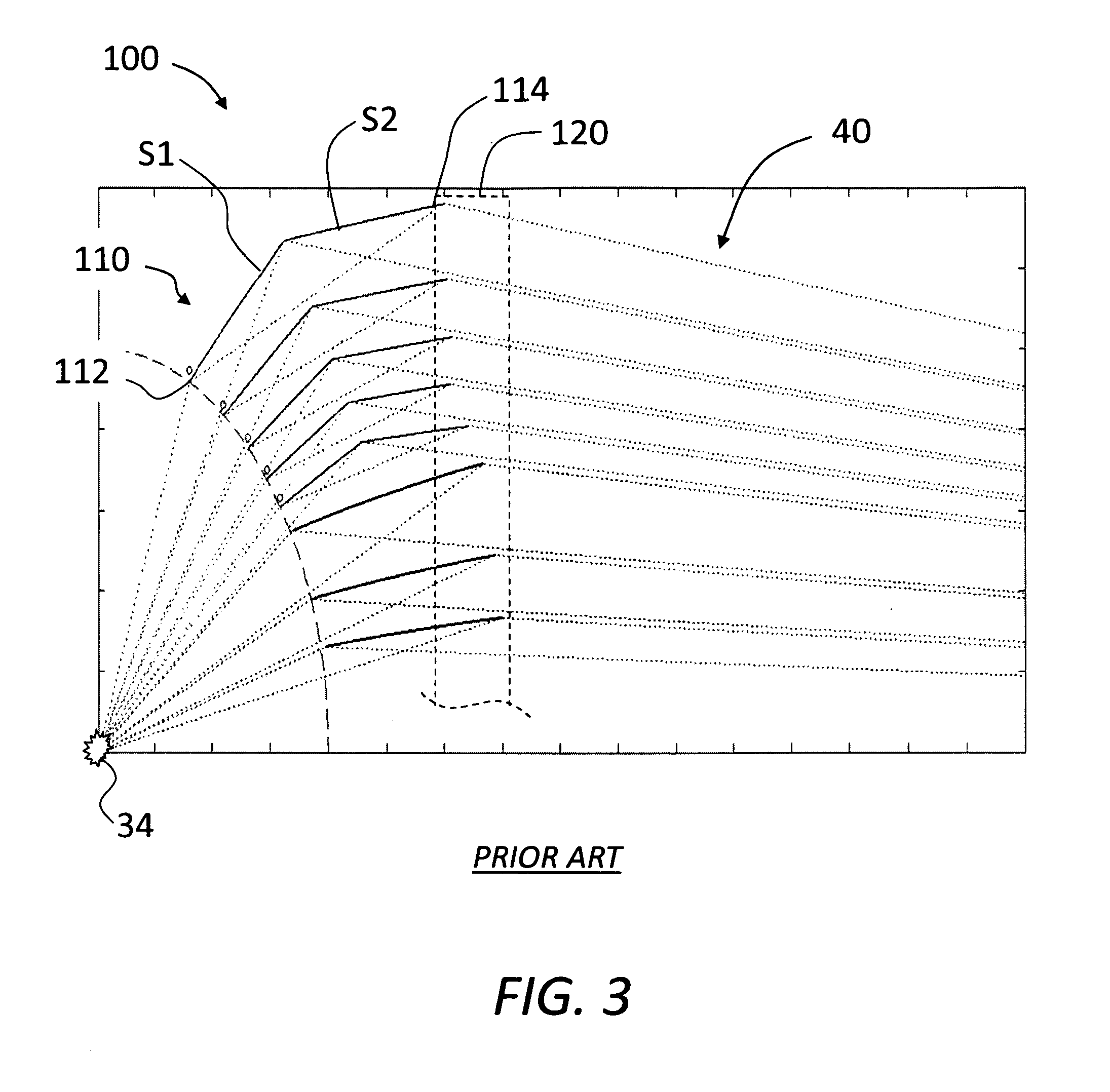Evaporative thermal management of grazing incidence collectors for EUV lithography
a collector and evaporative thermal management technology, applied in the field of grazingincidence collectors, can solve the problems of increasing the thermal load on the gic, compromising uniformity, and substantial thermal load on the one or more gic mirror shells, so as to minimize thermal distortion of the optical surface and uniform temperature distribution
- Summary
- Abstract
- Description
- Claims
- Application Information
AI Technical Summary
Benefits of technology
Problems solved by technology
Method used
Image
Examples
example gic
Mirror Cooling Assembly Parameters
[0092]FIG. 19 is similar to FIG. 10 and is used to illustrate an example embodiment of GIC mirror cooling assembly 150 that illustrates an example set or range of design parameters that satisfy the key operational parameters (namely, the capillary, sonic, entrainment, and boiling limits) associated with a heat-pipe thermal management configuration such as used in the GIC mirror cooling assembly.
[0093]In FIG. 9 the direction of gravity G is shown in an example direction to indicate that gravitational assist occurs when the direction of G has a component in the direction of the capillary flow of cooling fluid 172. Other directions for gravity G are possible that have a component in the direction of capillary flow of cooling fluid 172.
[0094]In GIC mirror cooling assembly 150, GIC mirror assembly 100 defines evaporation region 175E. It is assumed that wicks 240M and 240J have a thickness of 1 mm and the width of the vapor channel 240V in chamber 180 is ...
PUM
 Login to View More
Login to View More Abstract
Description
Claims
Application Information
 Login to View More
Login to View More - R&D
- Intellectual Property
- Life Sciences
- Materials
- Tech Scout
- Unparalleled Data Quality
- Higher Quality Content
- 60% Fewer Hallucinations
Browse by: Latest US Patents, China's latest patents, Technical Efficacy Thesaurus, Application Domain, Technology Topic, Popular Technical Reports.
© 2025 PatSnap. All rights reserved.Legal|Privacy policy|Modern Slavery Act Transparency Statement|Sitemap|About US| Contact US: help@patsnap.com



